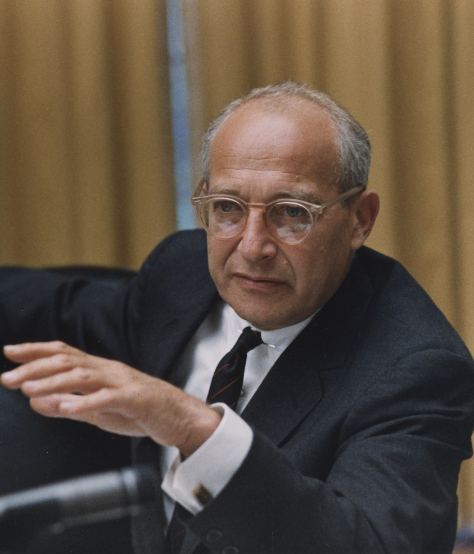
Walt Whitman Rostow was an American economist who also served as national security adviser to US president Lyndon Johnson. In 1960, he devised a development theory that came to be known as Rostow’s stages of growth.
His model postulates that economies go through five stages of economic growth: (1) Traditional Society, which is largely agrarian with limited technology and low productivity; (2) Preconditions for Takeoff, in which the society begins to develop manufacturing and investment increases as output increases; (3) Takeoff, in which growth becomes the norm and society shifts from an agrarian to an industrial structure; (4) Drive to Maturity, in which growth is diversified into new areas, the country relies less on imports, and society witnesses a surge in technology and innovation; (5) Age of High Mass Consumption, when the economy is dominated by the service sector and consumers shift toward durable goods and high-value services.
Rostow’s model gained prominence but also attracted criticism. It has been critiqued for being simplistic, too linear, and not taking into account differing historical and sociopolitical contexts.
There is no direct evidence to suggest that Indian policy makers explicitly referred to Rostow’s stages-of-growth theory. However, the broad framework of Rostow’s model was a general guide that many developing countries, including India, have followed.
For instance, India’s Five-Year Plans reflect Rostow’s model. The initial plans focused on agricultural development, followed by heavy industrialization in the 1950s and 1960s, which align with the Preconditions for Takeoff and Takeoff stages.
However, India’s economic development has been influenced by a complex interplay of sociopolitical factors and cannot be fully explained by any single economic theory or model.

